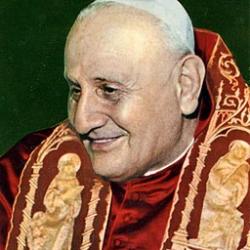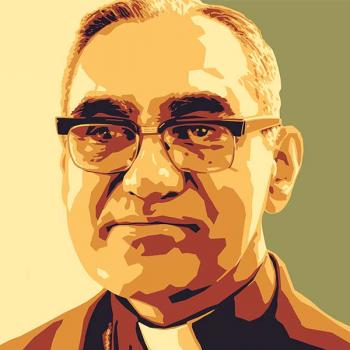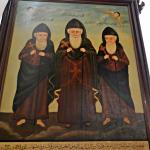 When they were born, Sts Grand Duchess Elizabeth and Edith Stein were as different as one could be: Grand Duchess Elizabeth was born in 1864 as a princess in the House of Hesse and a granddaughter of Queen Victoria while Edith Stein was born in 1891 Breslau to a large and fairly religious merchant-class Jewish family. It is unlikely that anyone, save with a gift of prophecy, could have foreseen that they were going to die as Christian martyrs after taking religious vows.
When they were born, Sts Grand Duchess Elizabeth and Edith Stein were as different as one could be: Grand Duchess Elizabeth was born in 1864 as a princess in the House of Hesse and a granddaughter of Queen Victoria while Edith Stein was born in 1891 Breslau to a large and fairly religious merchant-class Jewish family. It is unlikely that anyone, save with a gift of prophecy, could have foreseen that they were going to die as Christian martyrs after taking religious vows.
For both of them, their martyrdom brings into question why they were killed: is it appropriate to say they were Christian martyrs? In a glance, it appears they weren’t. Grand Duchess Elizabeth’s death was, at least in part, a political assassination, and Edith Stein was killed because of her Jewish heritage. But such a simple examination of their ends fails to see what else brought them to their deaths, and when one sees that, the fundamental relationship between their faith and the way they died can be shown. They viewed themselves as Christians, and they went to their death as believers, and it was as believers they had the calm resolve to face their death as a means of embracing Christ’s suffering and sharing in his work for the salvation of the world.[1] Moreover, as one explores their lives further, one begins to see how alike Grand Duchess Elizabeth and Edith Stein were to become: they were to be converts to a new faith (Orthodoxy and Catholicism), and, years after their conversion, they were to take on the religious life. But also just as important, they were leading representatives of Christian women seeking to provide greater respect for the women of their time and place, to raise their status in life. In this way, they were feminists in the proper sense (not like the radicals who would try to denigrate all gender). Their deaths not only gave their Christian faith a voice, but it made sure their feminism would not perish — those who grew to love them would come to see their feminism was intricately related to their Christian mission, and to promote them is to promote Christian feminism.
This is not to say their approach to feminism was one and the same: they tackled the plight of women according to the gifts they had been given. St Edith Stein was a philosopher, and her pursuit of phenomenology brought femininity itself into her view and led her to discuss it and the status of women in her day and place. She saw the need for women to be given an active voice in society: it is because they are different from men that they will offer needed complementary voices that had, until that time, been ignored, causing society to be less than what it could be. Their voice was not to be seen as detrimental to men, as if an increase in women’s contributions to society came from a decrease of men’s voices; it is not a zero-sum game. While she was more than a philosopher, and she actively engaged the tasks discussed in her own writings, it is clear that because she was a philosopher, she had to reflect on the matter intellectually. When she did speak, she was able to give a voice to women not only in the streets, but in the highest echelons of academic society. As she helped provide the feminine complement to academia, she also established an academic, philosophical complement to the feminist cause. Certainly women bring much of their heart with them wherever they go, but they also need to reflect upon who they are and their place in the world with their intellect. She explained well the situation she, and the women of her time, faced, and this can be seen as revealing the reason why she had not only to write about women, but to work for their empowerment:
Leading intellectuals are painting a shining ideal of feminine nature, and they are hoping that realization of this ideal will be the cure for all contemporary ailments and needs. At the same time, in the literature of the present and of the last decades, we see women presented again and again as the demon of the abyss. A great responsibility is being laid upon us by both sides. We are being obliged to consider the significance of woman and her existence as a problem. We cannot evade the question as to what we are and what we should be. And it is not only the reflective intellect which faces us with this question; life itself has made our experience problematic.[2]
In so few words she expresses the plight of women so well. Life itself had made the question of women important, because women had been mistreated and treated as unimportant for far too long — the common woman lived and experienced a denigration of their personhood merely by being a woman (of course, this is not to say it was only something women faced, but the fact of the matter is that this denigration affected women of all classes and social structures save the most elite of women, and brought them together with a common experience; many of us cannot not appreciate the way they were treated now because of the labor they went through to give birth to a better society has, in part, succeeded).
 Grand Duchess Elizabeth’s work for the promotion of women is best exemplified by the time she was Abbess of the Sts Martha and Mary Convent in the slums of Moscow. The journey which took her there was complex: born a Lutheran, she converted to Orthodoxy a few years after her marriage to Grand Duke Sergei. As can be seen by her entrance into the religious life after his assassination, she took her new faith seriously.[3] She worked long and hard for the poor, especially for the poor, neglected women. Lubov Millar describes her work in this way:
Grand Duchess Elizabeth’s work for the promotion of women is best exemplified by the time she was Abbess of the Sts Martha and Mary Convent in the slums of Moscow. The journey which took her there was complex: born a Lutheran, she converted to Orthodoxy a few years after her marriage to Grand Duke Sergei. As can be seen by her entrance into the religious life after his assassination, she took her new faith seriously.[3] She worked long and hard for the poor, especially for the poor, neglected women. Lubov Millar describes her work in this way:
Alleviating illiteracy, particularly among women, was another of the Grand Duchess’s concerns. She organized a Sunday School in the Convent for semi-literate and illiterate girls and female factory workers. The women came at 1 p.m. on Sundays and spent two hours in studies, supervised by some of the sisters and Father Eugene Sinadsky. After the lessons the women were given tea and sandwiches. The day would end with singing lessons or edifying talks on various useful subjects, accompanied by slide presentations. Before leaving the Convent, the women attended the reading of an Akathist in the church and then joined in singing Psalms
In this way, the Grand Duchess not only contributed to the education of these poor working women, but also gave them an opportunity to find themselves, on this day of rest, in pleasant surroundings, engaged in healthy pastimes, away from evil temptations and idle loitering. [4]
But this is not all: she opened a kitchen for poor women, helped establish a place for those poor women to live, and even created a hospital for women suffering from tuberculosis. She also looked for the improvement of women’s place in the Church. The most famous example of this was her attempt to re-establish the female diaconate in her time. Although her efforts failed, there was a considerable number of voices who agreed with her, and wanted the issue discussed; several decades later, the issue was brought up again, and a limited female diaconate was re-established by the Orthodox. Her creation of the Sts Martha and Mary convent was itself an attempt to provide women greater opportunities in the church by giving them an active, instead of a merely contemplative, order to join. Indeed, they were seen as an “unordained lay diaconate,” because of their charitable mission. She desired to bring women of all stripes together, to work together not only for their own spiritual elevation, but also for the good of other women, so that with their combined effort, women would find an increase in personal dignity as their status in the world increased. Both were needed; if women were to be respected by society, they had to respect themselves, and that meant they had to be given the assurance and education that they had, until that time, lacked. Grand Duchess Elizabeth was able to do that in a way others might not, because of her own personal status — what greater way for the poor, neglected women to feel important than to find the sister-in-law of the Tsar with them, not as an equal, but as their servant?
Two converts, two workers for the dignity of women, two extraordinary lives, two feminist saints. Sts Edith Stein and Grand Duchess Elizabeth both devoted themselves to God and gave up their lives in loving devotion to him. Their sacrifice was for the cause of Christ. In their elevation to sainthood, God has shown they followed the mission he gave to them for their lives. May we receive their work and continue it in our day.
Footnotes
[1] Edith Stein, in 1939, wrote her “Final Testament” which showed how she wanted her own life and death to be understood as dedicated to the work of Christ: “I fully accept in advance the death God has appointed for me, in perfect submission to his most holy will. May the Lord accept my life and death for the honor and glory of his name, for the needs of his holy Church — especially for the preservation, sanctification and final perfecting of our holy Order, and in particular for the Carmels of Cologne and Echt — for the Jewish people, that the Lord may be received by his own and his kingdom come in glory, for the deliverance of Germany and for peace throughout the world….” found in Waltraud Herbstrith, Edith Stein: A Biography. trans. Fr. Bernard Bonowitz, OCSO (New York: Harper and Row, 1985), 95.
Grand Duchess Elizabeth’s death, while motivated by her political status, was also geared towards those who lived with her in her convent: she did not die alone. She and her convent were so well loved in Moscow, none of the local communists were willing to follow the orders to execute them. Outsiders were sent in to do the job. Those in her group (children, nuns, and men) were beaten before being thrown twenty meters down a mind-shaft; injured, they were heard to be singing hymns. The executioners, disturbed that they had not died so easily, threw down grenades and flaming brushwood to make sure they were killed. When their bodies were eventually recovered, it was found that the Grand Duchess died from the effects of her wounds, but had, until her death, worked to heal others as best she could.
[2] Edith Stein, “Spirituality of the Christian Woman” in Essays on Woman. trans. Freda Mary Oben (Washington, DC: ICS Publications, 1996), 87.
[3] All that transpired after her husband was assassinated is of great value: she went to offer forgiveness and mercy to his assassin; then she went, like Becket, into a new form of life by giving up all that she had, selling it all for the construction of her convent. In its confines there would be a hospital, a pharmacy, an orphanage, and of course, a religious chapel as well as the residence for the sisters. She was to live a life of simplicity and self-giving, working for the poor, helping alleviate their suffering, often performing the nearly-miraculous in her medicinal aid (saving the lives of many people who were deemed by physicians as too far gone to be saved). She was to become well loved and respected by the people of Moscow, being much like Mother Teresa in Calcutta.
[4] Lubov Millar, Grand Duchess Elizabeth of Russia: New Martyr of the Communist Yoke (Redding, CA: Nikodemos Orthodox Publishing Society, 1993), 150.












